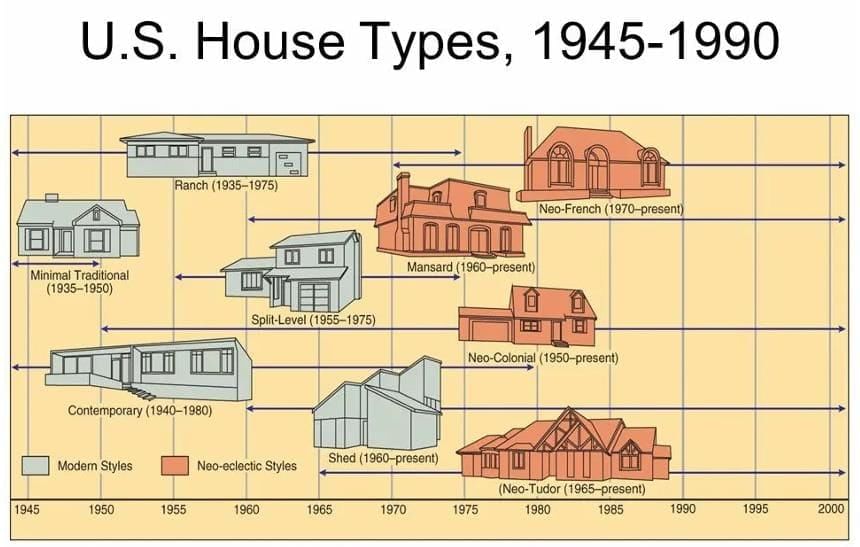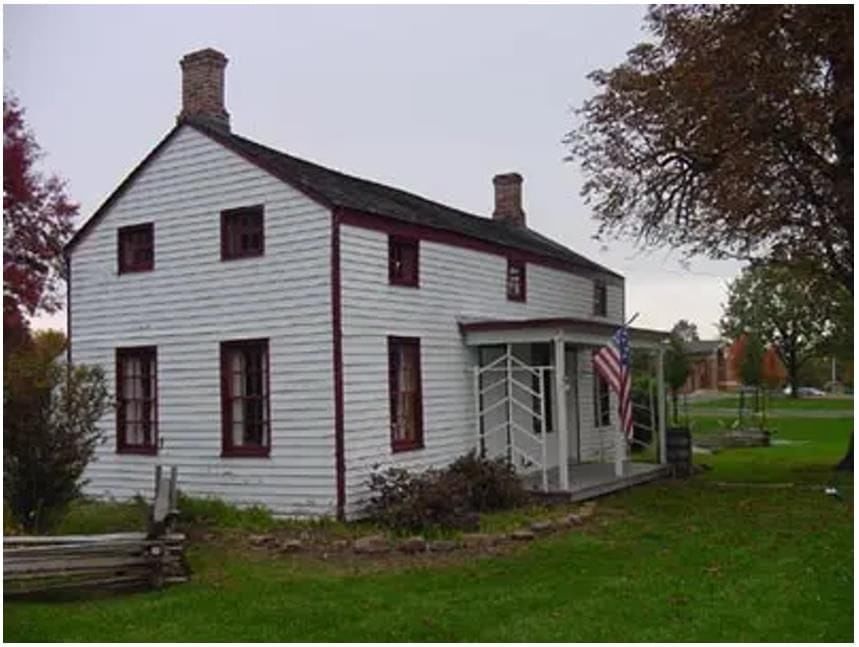Grade 9 Exam > Grade 9 Notes > History for Grade 9 > Chapter Notes: Cultural Landscapes
Cultural Landscapes Chapter Notes | History for Grade 9 PDF Download
Introduction
This chapter notes explores key concepts related to culture, including cultural landscapes, ecology, and regional identities. It examines how human activities shape environments and how gender, ethnicity, and land survey systems influence societal structures. Key terms like sequent occupancy, gender gap, and balkanization are highlighted to provide a comprehensive understanding of cultural dynamics and their spatial impacts.
Key Concepts
Culture
- A cultural landscape consists of structures and features within the physical environment shaped by human activities. Examples include buildings, artwork, Protestant churches in the U.S. South, cathedrals in Southern and Western Europe, and mosques in Southwest Asia.
- Cultural ecology studies how the natural environment influences cultural groups and their practices.
- Sequent occupancy refers to the idea that a location can be inhabited by various groups over time, each leaving distinct modifications on the landscape. For instance, Bolivia’s cultural landscape reflects influences from early Inca civilizations and Spanish colonial conquerors.
- An adaptive strategy describes how humans adjust to their physical and cultural environments to meet their needs.
- A symbolic landscape carries deep meaning beyond its physical appearance due to cultural and historical associations. The Temple Mount in Jerusalem, significant to Judaism, Islam, and Christianity, exemplifies this, as it includes remnants of an ancient Jewish temple and a medieval Islamic mosque, making it more than just part of an old city.
Regions
- Perceptual or vernacular regions are defined by cultural traits perceived through media, literature, and historical or cultural distinctions, such as the Bible Belt or Chinatown.
- Formal regions are areas where inhabitants share one or more common characteristics, like dialect, cuisine, or local activities, as seen in the French-speaking region of Canada.
- Functional regions are organized to operate as a cohesive unit socially, politically, and economically. Examples include the Chicago metropolitan area or the Bank of America, where radio broadcasts and sports teams foster local unity.
- Toponyms are place names that reflect cultural identity within a specific cultural landscape. For example, names like Santa Barbara (derived from "Santa," meaning saint) reveal historical origins.
Gender
- Traditional gender roles are increasingly challenged by popular culture, with patriarchal structures diminishing as feminist ideals gain traction.
- The gender gap refers to disparities in socioeconomic and political opportunities and power between men and women.
- High maternal mortality rates, or deaths of women during childbirth, are prevalent in less developed countries (LDCs) with higher poverty levels. High female infanticide rates, the killing of female infants, occur in regions where male children are preferred for carrying on family names and values.
- Dowry deaths, though less common today, persist in places like India, where a bride may be killed by her husband’s family if her family fails to pay the expected marriage dowry.
- Women’s suffrage, the right to vote, was granted in most countries in the 20th century, but disenfranchisement persists in some regions. Gender imbalances, with more men than women, are notable in densely populated areas like India and China.
State and Ethnicity
- Centripetal forces promote unity and stability within a state, fostering cohesion among its people.
- Centrifugal forces create division within a state, potentially leading to balkanization or weakened governance.
- A cultural shatter-belt describes the process where a state fragments due to ethnic conflicts, contributing to balkanization.
- A barrio is a Spanish-speaking neighborhood, often a hub of cultural identity for Hispanic or Latino communities.
- Ethnic cleansing involves a dominant ethnic group forcibly removing a less powerful group to create a homogeneous nation-state.
- An example is World War II, where millions of Jews, Romas, and others were forcibly relocated to concentration camps and exterminated.
- Balkanization refers to a state’s breakdown due to ethnic conflicts, as seen in Yugoslavia, which fragmented from a multicultural state into six republics.
- Land survey methods for dividing land among occupants vary by ethnic group in the U.S. and Canada. Folk customs related to land use are declining due to the influence of popular culture.
Land Survey Systems List
- Rectangular Survey System/Public Land Survey System: Divides land into rectangular parcels, used in the U.S. to distribute land west of the Appalachian Mountains.
- Long-lot Survey System: Divides land into narrow strips extending from rivers, roads, or canals, adopted by Spanish colonists and used by French settlers in the Mississippi and St. Lawrence River valleys, Canadian Maritimes, parts of Quebec, Louisiana, and Texas.
- Township and Range System: A rectangular land division method, designed by Thomas Jefferson, to evenly distribute settlers across U.S. interior farmlands.
- Metes and Bounds System: Uses natural features like streams or trees and descriptive boundaries to define land ownership, primarily used east of the Appalachian Mountains.

US Folk Housing Styles
- Middle Atlantic
- Lower Chesapeake/Tidewater
- New England

US Popular Housing Styles
(Widely spread, constantly evolving, lacking regional distinctiveness)
- Mass-produced
- Modern Style post-WWII (1945)
- Neo Eclectic since the 1960s
Key Terms
- Adaptive Strategy: Methods and practices developed by cultures to adapt to their environment, shaping survival, economic activities, and cultural landscapes.
- Balkanization: The fragmentation of a state or region into smaller, often conflicting units due to ethnic, cultural, or religious differences, leading to instability.
- Barrio: A Spanish-speaking neighborhood, often a center for Hispanic or Latino cultural identity, reflecting unique traditions and social networks.
- Centrifugal Forces: Factors that divide groups within a society, fostering fragmentation and potentially destabilizing a state or region.
- Centripetal Forces: Factors that unify a state or region, promoting stability through shared culture, language, or national identity.
- Cultural Ecology: The study of how human cultures interact with and adapt to their natural environment, influencing social and agricultural practices.
- Cultural Shatter-belt: A region of cultural diversity and conflict, where competing groups create tension and fragmentation, impacting cultural identity.
- Cultural Landscape: The visible impact of human activity on the natural environment, reflecting cultural practices through architecture, land use, and art.
- Dowry Deaths: Murders or suicides of brides in South Asia, often linked to dowry disputes, highlighting cultural norms and gender-based violence.
- Ethnic Cleansing: The forced removal or extermination of a less powerful ethnic group by a dominant group to achieve cultural homogeneity.
- Female Infanticide Rates: The intentional killing of female infants, driven by cultural preferences for male heirs, impacting gender ratios and demographics.
- Formal Regions: Areas with shared characteristics, such as language or culture, defined by consistent traits across the region.
- Functional Regions: Areas organized around a central node, connected through political, social, or economic activities, shaping regional cohesion.
- Gender Gap: Disparities in socioeconomic and political opportunities between men and women, reflecting cultural and systemic inequalities.
- Land Survey Methods: Techniques for measuring and mapping land to define boundaries and plan usage, influencing cultural landscapes.
- Long-lot Survey System: A land division method creating narrow parcels along rivers or roads, reflecting French and Spanish colonial practices.
- Lower Chesapeake/Tidewater Housing Style: A colonial architectural style in Virginia and Maryland, using local materials and raised foundations, adapted to regional conditions.
- Mass-produced Housing Style: Standardized residential construction for rapid, cost-effective development, shaping modern suburban landscapes.
- Maternal Mortality Rates: The number of maternal deaths per 100,000 live births, indicating healthcare access and women’s health disparities.
- Metes and Bounds System: A land surveying method using natural features and descriptions to define irregular property boundaries.
- Middle Atlantic Housing Style: An architectural style blending European influences, with brick or stone facades, reflecting regional diversity.
- Modern Style Post WW2 (1945) Housing Style: A post-war architectural movement emphasizing simplicity, open floor plans, and integration with nature.
- Neo Eclectic since the 1960s Housing Style: A contemporary architectural style blending historical and modern elements, reflecting diverse cultural preferences.
- New England Housing Style: A functional architectural style with steep roofs and local materials, reflecting New England’s cultural and environmental heritage.
- Perceptual/Vernacular Regions: Areas defined by people’s cultural perceptions, shaped by media and historical narratives, like the Bible Belt.
- Rectangular Survey System/Public Land Survey System: A grid-based land division method used in the U.S. to distribute land systematically.
- Sequent Occupancy: The process of successive groups settling a location, each leaving cultural imprints that shape the landscape over time.
- Symbolic Landscape: A geographic area with cultural or historical significance beyond its physical features, embodying collective memory.
- Toponyms: Place names reflecting cultural, historical, or linguistic identities, providing insights into a region’s cultural landscape.
- Township and Range System: A U.S. land division method creating a grid of townships and sections, shaping rural settlement patterns.
- Traditional Gender Roles: Societal expectations dictating gender-based behaviors, influencing family, work, and community dynamics.
- Women’s Suffrage: The movement for women’s voting rights, reshaping political landscapes and promoting gender equality worldwide.
The document Cultural Landscapes Chapter Notes | History for Grade 9 is a part of the Grade 9 Course History for Grade 9.
All you need of Grade 9 at this link: Grade 9
|
24 docs|7 tests
|
FAQs on Cultural Landscapes Chapter Notes - History for Grade 9
| 1. What are the historical causes of language diffusion? |  |
Ans. Historical causes of language diffusion include colonialism, imperialism, and trade. Colonial powers often imposed their languages on colonized regions, leading to the spread of languages like English, Spanish, and French. Trade facilitated the exchange of languages and dialects as merchants and traders interacted with various cultures, further promoting linguistic blending and adoption.
| 2. How do communication technologies influence language diffusion? |  |
Ans. Communication technologies, such as the internet and mobile phones, have greatly accelerated language diffusion by allowing instant communication across vast distances. They enable the sharing of ideas, cultures, and languages in real-time, leading to the emergence of new words, slang, and even entirely new languages, as people from diverse backgrounds interact online.
| 3. What is time-space convergence, and how does it relate to language diffusion? |  |
Ans. Time-space convergence refers to the phenomenon where advancements in transportation and communication reduce the perceived distance between places, effectively shortening time. This facilitates greater interaction among different cultures and languages, leading to language diffusion as people increasingly share and adopt words and phrases from one another.
| 4. What role do language policies play in the cultural landscape? |  |
Ans. Language policies are crucial in shaping the cultural landscape as they determine which languages are promoted or suppressed in education, government, and media. These policies can influence language maintenance or shift, impacting cultural identity, social cohesion, and the preservation of minority languages while promoting dominant languages.
| 5. How do ethnic and universalizing religions affect language diffusion? |  |
Ans. Ethnic and universalizing religions influence language diffusion by spreading specific languages through religious texts, practices, and rituals. Universalizing religions, such as Christianity and Islam, often promote their languages (like Latin or Arabic) as liturgical languages, leading to their spread beyond their original cultural contexts, while ethnic religions may reinforce local languages and dialects.
Related Searches















